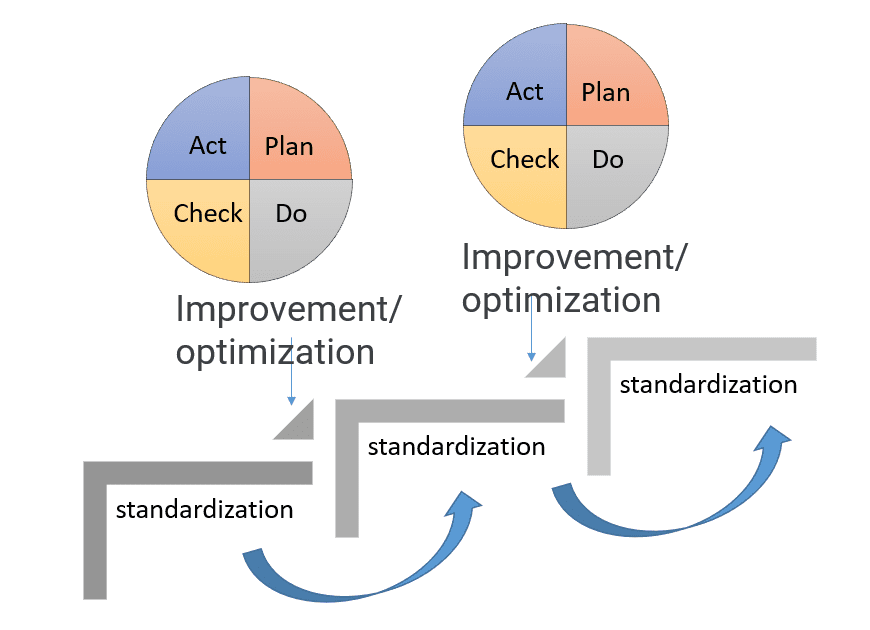Continuous improvement is essential for any organization that wants to succeed in today’s dynamic business environment. One of the most effective tools supporting this process is the PDCA cycle (Plan-Do-Check-Act).
Understanding the PDCA cycle
The PDCA cycle, also known as the Deming cycle. It is a structured management model that enables organizations to identify areas for improvement, implement solutions, monitor progress and continuously adapt to achieve higher quality, efficiency and customer satisfaction. For this reason, it is perfect as a tool supporting process management.

Fig. 1. PDCA cycle – Graphical visualization
Plan
The first step in planning our activities. This is a key stage, because we need to define exactly what we want to achieve, whether we have the appropriate resources and competences. It is a thorough verification of the current state and setting a direction for improvement.
It is worth carefully analyzing the current state with hard evidence in the form of key indicators for a given process. When setting a goal, it must certainly be clear, understandable and realistic to achieve.
Do
The next step is to implement the planned activities from step one. However, this stage should be treated with caution and not implementing all the assumptions at once. Gradual experimentation will show whether we are going in the right direction, or perhaps our plan needs adjustments.
Check
In the third step, we evaluate the effects of the implementation of our plan. Simply, whether we managed to achieve what we planned. We compare the actual results with those that were planned.
Act
Standardize the new, better solution you have developed and go back to step one to continue improving the process, because the PDCA cycle is a road that has no end 😊.
What are the benefits of the PDCA cycle implementing?
The implementation of the PDCA cycle can bring many benefits to the organization. Below are some of the benefits of implementing this cycle:
Quality improvement
PDCA helps organizations to continuously improve the quality of their products or services. By monitoring performance, identifying issues, analyzing root causes, and implementing effective corrective actions, organizations can systematically improve the quality of their products and meet customer needs.
Fig. 2. PDCA cycle applied in standardization
Increased efficiency
Implementing this approach enables organizations to identify inefficient processes and introduce improvements. By planning, implementing, monitoring and adjusting activities, organizations can minimize waste, reduce cycle time, increase efficiency and achieve better operational results.
Focus on data and evidences
If we are not working on data, we are just another person expressing our opinion. This is a famous maxim of Dr. Deming. For this reason, every organization should work with data. This evidence-based approach enables better decision making and effective action.
Continuous improvement
This cycle is an iterative process that allows organizations to continuously adapt and improve. Actions taken based on the results of the analysis and assessment are implemented, and then the cycle starts again, creating a path of continuous improvement.
Employee engagement
Implementing the Deming cycle can lead to greater employee engagement. As part of this process, employees are encouraged to actively participate in identifying issues, generating solutions and monitoring results. This, in turn, leads to an increased sense of responsibility, commitment and job satisfaction.
Additionally:
– it is a simple, flexible tool that can be used in any project, in any company
– it forms the foundation of the ISO 9001 standard and the IATF 16949 standard
– is a key element of Kaizen
– it enables the standardization of processes
You can download editable Excel form for free on the Free Quality Tools
Document name: PCDA cycle – Excel form
Dariusz Kowalczyk



